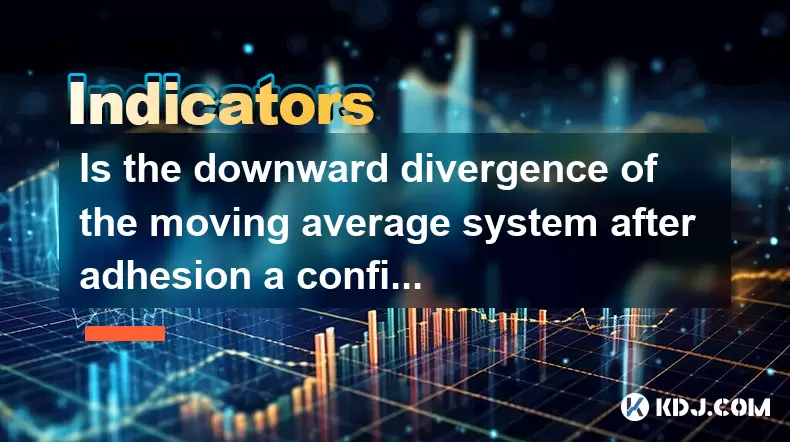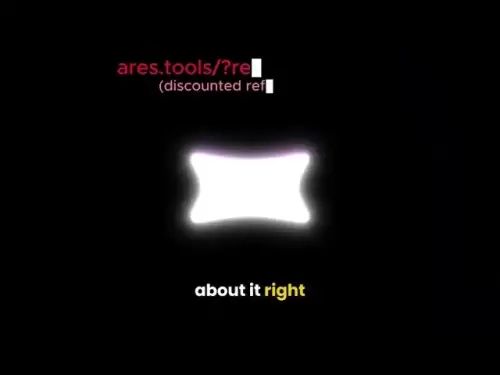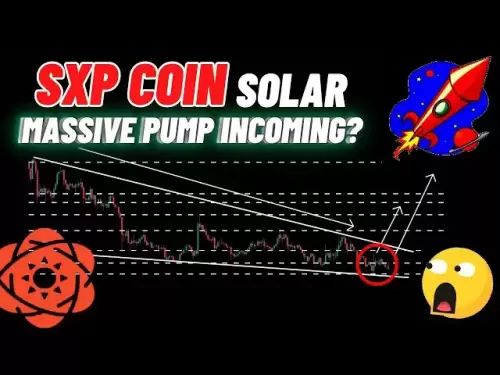-
 Bitcoin
Bitcoin $117500
2.04% -
 Ethereum
Ethereum $3759
3.02% -
 XRP
XRP $3.171
3.30% -
 Tether USDt
Tether USDt $1.000
0.03% -
 BNB
BNB $782.4
2.52% -
 Solana
Solana $187.2
5.62% -
 USDC
USDC $0.0000
0.02% -
 Dogecoin
Dogecoin $0.2380
5.26% -
 TRON
TRON $0.3175
1.07% -
 Cardano
Cardano $0.8227
4.03% -
 Hyperliquid
Hyperliquid $44.50
5.44% -
 Sui
Sui $4.020
10.07% -
 Stellar
Stellar $0.4396
6.28% -
 Chainlink
Chainlink $18.32
4.55% -
 Hedera
Hedera $0.2628
10.71% -
 Bitcoin Cash
Bitcoin Cash $554.8
4.90% -
 Avalanche
Avalanche $24.20
4.60% -
 Litecoin
Litecoin $113.7
2.31% -
 Shiba Inu
Shiba Inu $0.00001413
5.99% -
 UNUS SED LEO
UNUS SED LEO $8.984
0.11% -
 Toncoin
Toncoin $3.326
7.22% -
 Ethena USDe
Ethena USDe $1.001
0.00% -
 Uniswap
Uniswap $10.49
4.56% -
 Polkadot
Polkadot $4.092
4.02% -
 Monero
Monero $326.6
1.30% -
 Dai
Dai $1.000
-0.01% -
 Bitget Token
Bitget Token $4.570
2.49% -
 Pepe
Pepe $0.00001267
5.10% -
 Aave
Aave $297.3
3.10% -
 Cronos
Cronos $0.1344
4.10%
Is the downward divergence of the moving average system after adhesion a confirmation of a break or a short trap?
Downward MA divergence after adhesion can signal a breakdown or a short trap—confirm with volume, price action, and higher timeframe trends to avoid false moves.
Jul 26, 2025 at 06:56 am

Understanding Moving Average Adhesion and Divergence
In technical analysis within the cryptocurrency market, the behavior of moving averages (MAs) is closely monitored by traders to identify potential trend shifts. When two or more moving averages—such as the 50-period and 200-period MA—converge or "adhere" to each other, it often indicates a period of consolidation or low volatility. This phase is known as moving average adhesion. Once this adhesion ends, the subsequent movement—specifically downward divergence—can be interpreted in multiple ways. The key question is whether this divergence signals a confirmed breakdown or merely a short trap designed to lure bearish traders into premature positions.
The term downward divergence after adhesion refers to a scenario where, after a convergence phase, the shorter-term MA begins to move downward relative to the longer-term MA. This can appear bearish at first glance, suggesting weakening momentum and a potential bearish trend. However, in volatile markets like cryptocurrency, such signals are not always reliable on their own.
What Constitutes a Breakdown Confirmation?
A true breakdown confirmation following MA divergence requires more than just the visual separation of moving averages. Traders must validate the signal using price action and volume. For example, if the price closes below a key support level—such as a previous swing low or a horizontal demand zone—while the moving averages diverge downward, the breakdown gains credibility.
Additional confirmation tools include:
- Volume surge on the downside, indicating strong selling pressure.
- Bearish candlestick patterns, such as engulfing candles or dark cloud cover, forming at the breakdown point.
- Relative Strength Index (RSI) dropping below 50 and trending toward oversold conditions without bouncing.
When these elements align with downward MA divergence, the probability of a sustained downtrend increases. In the context of Bitcoin or Ethereum, such setups are often observed after prolonged sideways movements, especially following major rallies.
Recognizing a Short Trap Setup
Conversely, a short trap occurs when the market gives a false signal of breakdown, prompting traders to enter short positions, only for the price to reverse sharply upward. In such cases, downward MA divergence after adhesion may appear legitimate but lacks supporting confirmation. The trap is often set in low-liquidity zones or during periods of low trading volume, common in altcoin markets.
Key characteristics of a short trap include:
- Weak volume on the breakdown candle, suggesting lack of conviction.
- Price quickly reclaiming the breached support level, often within the same trading session.
- Divergence between price and momentum indicators—e.g., MACD histogram shrinking despite price decline.
- Order book imbalances on exchanges showing large buy walls just below the breakdown point.
In the cryptocurrency space, short traps are frequently exploited by whales or automated bots that trigger stop-loss orders from leveraged short positions before reversing the trend.
How to Analyze MA Divergence with Multi-Timeframe Context
To avoid misinterpretation, traders should analyze MA divergence across multiple timeframes. A downward divergence on the 4-hour chart may appear bearish, but if the daily chart shows the price still above the 200-day MA and in an uptrend, the signal is suspect.
Steps to conduct multi-timeframe analysis:
- Start with the daily chart to determine the primary trend.
- Switch to the 4-hour or 1-hour chart to observe the adhesion and divergence event.
- Check for alignment of support/resistance levels across timeframes.
- Monitor on-chain metrics, such as exchange outflows or active addresses, to assess underlying demand.
For instance, if Bitcoin shows MA adhesion on the 6-hour chart followed by downward divergence, but the daily chart reveals accumulation patterns and rising on-chain activity, the divergence is more likely a short-term pullback than a reversal.
Practical Steps to Trade This Setup Safely
To navigate the ambiguity of downward MA divergence after adhesion, traders should follow a structured approach that minimizes risk:
- Wait for price confirmation before entering any short position. Do not act solely on the MA crossover.
- Place pending sell-stop orders below support, but only if volume and momentum align.
- Use trailing stops or fixed stop-loss levels above the recent swing high to limit exposure.
- Avoid trading during low-liquidity periods, such as weekends or holidays, when traps are more common.
- Combine MA analysis with on-chain data from platforms like Glassnode or CryptoQuant to verify whether selling pressure is organic or manipulative.
For example, if Ethereum’s 50-day and 200-day MAs adhere and then diverge downward, but exchange reserves are decreasing and miner holdings are stable, the bearish signal may lack fundamental backing.
Common Misinterpretations and Psychological Traps
Many traders fall into the trap of over-relying on moving averages as standalone indicators. The psychological urge to act on a visible crossover can lead to impulsive decisions. In fast-moving crypto markets, lagging indicators like MAs often generate signals after the price has already moved.
Another common error is ignoring market context. A divergence that occurs after a 30% rally may carry different weight than one after a 60% correction. Traders must assess the stage of the market cycle—accumulation, markup, distribution, or markdown—before interpreting MA behavior.
Moreover, algorithmic trading bots often exploit predictable human reactions to MA crossovers. A sudden drop through the moving averages may be a liquidity grab rather than a genuine trend change.
Frequently Asked Questions
Can downward MA divergence occur in a bull market?
Yes. Even in a strong bull market, temporary downward divergence after adhesion can appear during pullbacks or consolidation phases. These are often short-lived and followed by resumption of the uptrend, especially if higher timeframes remain bullish.
How long should I wait for confirmation after seeing MA divergence?
There is no fixed timeframe. Wait for at least one full candle close beyond a key level with increased volume. On the 4-hour chart, this could mean waiting 4–8 hours. Patience prevents false entries.
Does the length of the adhesion period affect the divergence's reliability?
Generally, longer adhesion periods (e.g., MAs stuck together for weeks) lead to more significant moves upon divergence. Short adhesions may result in weak or fake breakouts.
Are certain cryptocurrencies more prone to short traps during MA divergence?
Yes. Low-market-cap altcoins with thin order books are more susceptible to manipulation. Major assets like Bitcoin and Ethereum tend to produce more reliable signals due to higher liquidity and broader participation.
Disclaimer:info@kdj.com
The information provided is not trading advice. kdj.com does not assume any responsibility for any investments made based on the information provided in this article. Cryptocurrencies are highly volatile and it is highly recommended that you invest with caution after thorough research!
If you believe that the content used on this website infringes your copyright, please contact us immediately (info@kdj.com) and we will delete it promptly.
- Vaultz Capital's Bitcoin Bet: A Strategic Shift on the Aquis Exchange
- 2025-07-26 20:30:12
- Pi Coin, Wallet Features, and Coinbase: What's the Buzz?
- 2025-07-26 18:30:12
- Worldcoin, Punisher Coin, and the Meme Coin Mania: What's the Haps?
- 2025-07-26 18:30:12
- Conviction, Justice System, and Murders: A Look at Recent Cases and Shifting Perspectives
- 2025-07-26 18:50:11
- Shiba Inu, Remittix, and the Market Surge: What's the Hype?
- 2025-07-26 19:10:12
- Cardano Price, ADA Holders, and Leadership Criticism: What's the Real Deal?
- 2025-07-26 19:30:12
Related knowledge

What does it mean that the rebound is blocked after the moving average is arranged in a short position for the first time?
Jul 26,2025 at 10:51am
Understanding the Short-Term Moving Average ConfigurationWhen traders refer to a 'short position arrangement' in moving averages, they are describing ...

What does it mean that the parabolic indicator and the price break through the previous high at the same time?
Jul 26,2025 at 07:22pm
Understanding the Parabolic Indicator (SAR)The Parabolic SAR (Stop and Reverse) is a technical analysis tool developed by J. Welles Wilder to identify...

What does it mean when the price rises along the 5-day moving average for five consecutive days?
Jul 26,2025 at 08:07am
Understanding the 5-Day Moving Average in Cryptocurrency TradingThe 5-day moving average (5DMA) is a widely used technical indicator in cryptocurrency...

What does it mean when ADX breaks through 25 and +DI continues to rise?
Jul 26,2025 at 07:00pm
Understanding the ADX Indicator and Its ThresholdsThe Average Directional Index (ADX) is a technical analysis tool used to measure the strength of a t...

What does it mean when the price breaks through the 60-day moving average with a large volume but shrinks the next day?
Jul 26,2025 at 06:01am
Understanding the 60-Day Moving Average in Cryptocurrency TradingThe 60-day moving average (60DMA) is a widely used technical indicator in the cryptoc...

What does the sudden rise of ADX in DMI accompanied by +DI crossing -DI indicate?
Jul 26,2025 at 01:21pm
Understanding the DMI and Its Core ComponentsThe Directional Movement Index (DMI) is a technical analysis tool used to determine the presence and stre...

What does it mean that the rebound is blocked after the moving average is arranged in a short position for the first time?
Jul 26,2025 at 10:51am
Understanding the Short-Term Moving Average ConfigurationWhen traders refer to a 'short position arrangement' in moving averages, they are describing ...

What does it mean that the parabolic indicator and the price break through the previous high at the same time?
Jul 26,2025 at 07:22pm
Understanding the Parabolic Indicator (SAR)The Parabolic SAR (Stop and Reverse) is a technical analysis tool developed by J. Welles Wilder to identify...

What does it mean when the price rises along the 5-day moving average for five consecutive days?
Jul 26,2025 at 08:07am
Understanding the 5-Day Moving Average in Cryptocurrency TradingThe 5-day moving average (5DMA) is a widely used technical indicator in cryptocurrency...

What does it mean when ADX breaks through 25 and +DI continues to rise?
Jul 26,2025 at 07:00pm
Understanding the ADX Indicator and Its ThresholdsThe Average Directional Index (ADX) is a technical analysis tool used to measure the strength of a t...

What does it mean when the price breaks through the 60-day moving average with a large volume but shrinks the next day?
Jul 26,2025 at 06:01am
Understanding the 60-Day Moving Average in Cryptocurrency TradingThe 60-day moving average (60DMA) is a widely used technical indicator in the cryptoc...

What does the sudden rise of ADX in DMI accompanied by +DI crossing -DI indicate?
Jul 26,2025 at 01:21pm
Understanding the DMI and Its Core ComponentsThe Directional Movement Index (DMI) is a technical analysis tool used to determine the presence and stre...
See all articles

























































































